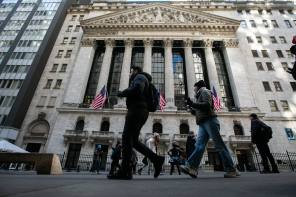

Fund buyers are taking a fresh look at listed infrastructure vehicles following signs that policymakers may be about to turn to fiscal rather than monetary stimulus to boost growth.
The UK’s new chancellor, Philip Hammond, has indicated that an era of restrained government spending may be at an end, while central bankers in Europe, Japan and the UK are stepping up calls for governments to stimulate growth amid suspicions that the effectiveness of monetary policy has peaked.
Rory McPherson, head of investment strategy at Psigma, said the firm had initiated a 3 per cent position in infrastructure in its Balanced portfolio, at the expense of emerging market exposure and resources. Psigma elected to use the newly-launched Legg Mason Rare Infrastructure Income fund.
Mr McPherson said the shift – made by selling down equity exposure ahead of the EU referendum and deploying cash afterwards – was about income, reducing beta and shielding the fund from a global growth slowdown. The Legg Mason fund, he added, was more defensive and bought stocks exposed to essential, as opposed to growth-related, assets.
Whitechurch Securities managing director Gavin Haynes said his firm has also increased exposure following the Brexit vote. Listed infrastructure exposure has risen from 5 to 11 per cent in his Balanced portfolio via an increased weighting to the £1.7bn First State Global Listed Infrastructure strategy and the addition of the Legg Mason fund, at the expense of stocks and commercial property.
“The belief is that QE has run out of steam, so we are going to see some fiscal easing. Infrastructure will be a key tool, especially in the UK where we have seen a new chancellor who has made some noises about reducing austerity,” he added.
But Brexit may also present headwinds – a pre-referendum survey by S&P Global found 71 per cent of respondents thought it would depress UK infrastructure investment over the next two years. However, with infrastructure funds typically global in nature, allocators are optimistic.
“We like the lower beta factor,” Mr Haynes said. “It ticks a lot of boxes at the moment with a fairly strong risk/reward profile. It offers inflation protection at a time when inflation expectations are too low.”
While typically sitting in the equity risk-bucket, infrastructure stocks do reduce beta. In base currency terms, the MSCI World Infrastructure and MSCI World indices have a 0.75 correlation over one year.
In sterling terms, the indices have returned 26 per cent and 19 per cent respectively, mainly due to currency weakness. Mr McPherson suggested underlying returns from infrastructure were about 15 per cent if currency moves were stripped out. The MSCI World returned 0.7 per cent in base currency. “We would expect an annual return of around 7 per cent [from Legg Mason], given where valuations are,” he said. “Most of the returns will come from income.”
The suspension of several open-ended property funds has led some selectors to consider how best to replace these allocations. But Stephen Lennon, investment manager at Parmenion, was critical of the idea of using infrastructure as a direct substitute. “The yield from infrastructure equities would be high but not as high as bricks and mortar,” he said.
KEY NUMBERS
24th: The UK’s position in the World Bank’s infrastructure quality rankings, down from 19th in 2006
6ppt: Increase in Whitechurch Securities’ exposure to listed infrastructure



